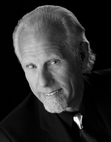Paul Bishop's Blog, page 17
July 18, 2018
AN AUTHENTIC CRIME THRILLER—LIE CATCHERS
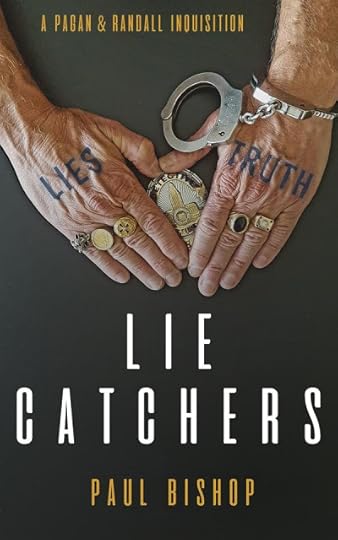 AN AUTHENTIC CRIME THRILLER
AN AUTHENTIC CRIME THRILLERLIE CATCHERSBYPAUL BISHOPA NEW RELEASE FROM WOLFPACK PUBLISHING
With her special abilities, top LAPD Robbery-Homicide detective Calamity Jane Randall thought she knew all about interrogation until she was partnered with detective Ray Pagan. Wielding a suspect’s vocal intonations, emotions, and physical gestures like a scalpel, Pagan’s empathetic lie catching abilities are legendary.
Both detectives are scarred by past tragedies, but together they threaten to tear the city apart searching for a duo of missing children—a search where the right answer to the wrong question can mean sudden death.
Ripped from the experiences of thirty-five year veteran LAPD detective and nationally recognized interrogator, Paul Bishop, Lie Catchers takes the reader inside the dark and dangerous mind games of the men and women for whom truth is an obsession...
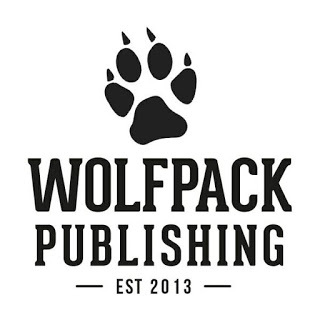 WHAT PEOPLE ARE SAYING"Paul Bishop is the real deal - real cop, real writer. You never go wrong with a Bishop novel." - Max Allan Collins, bestselling author of Road to Perdition
WHAT PEOPLE ARE SAYING"Paul Bishop is the real deal - real cop, real writer. You never go wrong with a Bishop novel." - Max Allan Collins, bestselling author of Road to Perdition"Lie Catchers crackles with authenticity. Bishop's thirty-five years as an LAPD Top Cop fuels a turbo-charged novel." - Robert Crais, bestselling author of the Elvis Cole novels.
"Bishop writes with a smoothness that mirrors his own voice. It’s was as if you are sitting alone with him and he is telling you the story. Writing with a skill set that captures your attention and holds it is no easy task, Bishop just makes it seem that way. A veteran of 35 years with the LAPD he doesn't write fiction. That does not imply he isn't a novelist. He is a journeyman so rich with an inventory of experience that when he writes about cops it stands as unchallenged authenticity. Humor or drama Paul knows both well. He has felt the shock of a gun exploding in his hand, he knows the adrenaline rush of a high-speed pursuit and he has held the bloodied hand of a dying suspect. This is the real stuff...” – Dallas Barnes, author of See The Woman and Man In Heat
"Paul Bishop's experience as a top-shelf interrogator shines through the pages of Lie Catchers, a fascinating emotional story of truth, redemption, and justice. " - Kathy Bennett, author of the LAPD Detective Maddie Divine series
"Paul Bishop weaves a fictional account so vivid you feel as if you're riding shotgun with the investigating officers. A crackling good story, you'll love Pagan and Randall, Bishop's latest dynamic duo." - Robin Burcell, bestselling author of The Last Good Place
"Through the narrative of Lie Catchers, Paul Bishop opens the door to the secrets of police interrogation, giving us a unique take on LA crime. With dynamics worthy of Sherlock Holmes." - Sam Hawken, The Night Charter
"Lie Catchers is a remarkable journey into police interrogation tactics and the study of criminal psychology. Bishop has been there and knows all the intimate details. Authenticity simply spills across the pages." - O'Neil De Noux, author of the LaStanza novels
Published on July 18, 2018 17:59
June 14, 2018
NOW AVAILABLE
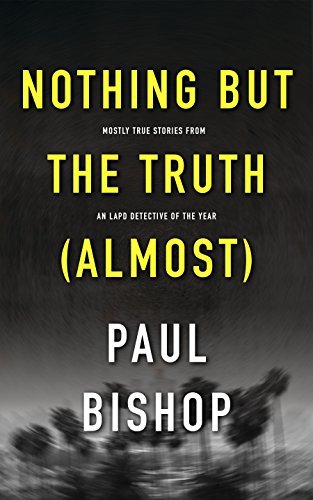 NOTHING BUT THE TRUTH (ALMOST)Taking stories from his exceptional career with the Los Angeles Police Department, novelist, screenwriter, and television personality Paul Bishop shares some of the funny, the dangerous, and the poignant cases from his 35 years on the job. A nationally recognized behaviorist and deception detection expert, Paul’s high profile Special Assault Units regularly produced the highest number of detective initiated arrests and highest crime clearance rates in the city. Twice honored as LAPD’s Detective of the Year, he also received the Quality and Productivity Commission Award from the City of Los Angeles.
NOTHING BUT THE TRUTH (ALMOST)Taking stories from his exceptional career with the Los Angeles Police Department, novelist, screenwriter, and television personality Paul Bishop shares some of the funny, the dangerous, and the poignant cases from his 35 years on the job. A nationally recognized behaviorist and deception detection expert, Paul’s high profile Special Assault Units regularly produced the highest number of detective initiated arrests and highest crime clearance rates in the city. Twice honored as LAPD’s Detective of the Year, he also received the Quality and Productivity Commission Award from the City of Los Angeles.Starring as the lead interrogator and driving force behind the ABC TV reality show Take the Money and Run from producer Jerry Bruckheimer, Paul displayed his unique skills as a human lie detector to a nationwide audience. He is now a highly sought after resource for private companies faced with in-house data breaches, industrial espionage, and corporate sabotage. He is the author of fifteen novels and has written numerous scripts for episodic television and feature films. Nothing But The Truth (Almost)... provides an insight into Paul skills and fascinating profession.
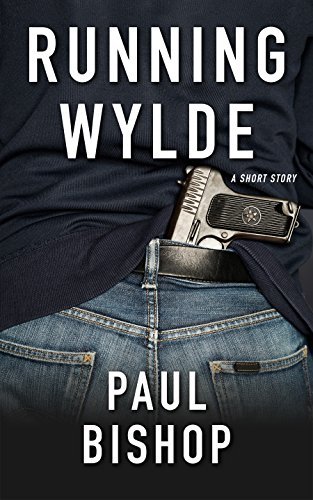 RUNNING WYLDELAPD Homicide detective and marathon runner Devlin Wylde always knew what to do in every situation...until his wife, Hanna, disappeared into the Santa Monica Mountains on a solo training run. Desperately searching for answers, Devlin’s only solace is to throw himself into his work, and to run, and run, and run.
RUNNING WYLDELAPD Homicide detective and marathon runner Devlin Wylde always knew what to do in every situation...until his wife, Hanna, disappeared into the Santa Monica Mountains on a solo training run. Desperately searching for answers, Devlin’s only solace is to throw himself into his work, and to run, and run, and run.Protecting the cougars in the rugged wilderness where she vanished was Hanna Wylde’s passion. When the victim of a serial killer is discovered in the same area, Devlin goes on high alert. His only clues are the tracks of a large wild cat, and a strange, bare-footed, woman runner who is faster than anything he’s ever seen on two legs.
Published on June 14, 2018 15:51
June 9, 2018
AVAILABLE NOW
Published on June 09, 2018 09:36
COMING SOON
Published on June 09, 2018 09:36
SOLO—STEALING STAR WAR’S THUNDER
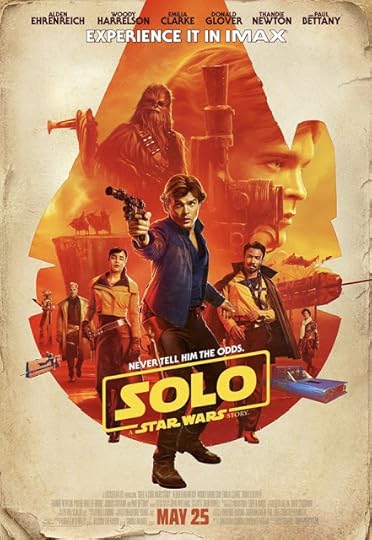 SOLO—STEALING STAR WAR’S THUNDEROnce you accept Solo as simply one big intergalactic heist movie, it works quite well. It delivers what a heist film should (including several excellent set pieces) while also ticking all of the Star War's boxes, but without becoming tedious in the process.
SOLO—STEALING STAR WAR’S THUNDEROnce you accept Solo as simply one big intergalactic heist movie, it works quite well. It delivers what a heist film should (including several excellent set pieces) while also ticking all of the Star War's boxes, but without becoming tedious in the process.As a standalone, Solo dispenses with the wider Star Wars world of mass destruction and continual hopelessness and gives us a fresh, intelligent, and entertaining film...
Published on June 09, 2018 09:34
OCEAN'S EIGHT—NOT QUITE ALL WET
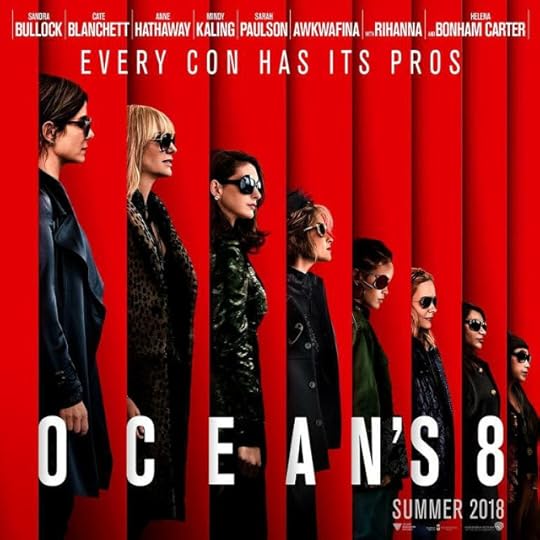 OCEAN'S EIGHT—NOT QUITE ALL WETDespite an uneven beginning, Ocean's Eight turns into a solid if uninspired heist film, with a final twist making the journey worthwhile. An exercise in girl power, Ocean's Eight gives several deserved nods to its big brothers (Eleven, Twelve, and Thirteen), but would have been better dispensing with the traditional and, in this case, tedious, gathering of the crooks. Everyone in the audience knew where this was going and squirmed around until the actual caper fired up.
OCEAN'S EIGHT—NOT QUITE ALL WETDespite an uneven beginning, Ocean's Eight turns into a solid if uninspired heist film, with a final twist making the journey worthwhile. An exercise in girl power, Ocean's Eight gives several deserved nods to its big brothers (Eleven, Twelve, and Thirteen), but would have been better dispensing with the traditional and, in this case, tedious, gathering of the crooks. Everyone in the audience knew where this was going and squirmed around until the actual caper fired up.Once our intrepid crew of female heisters gets on the job (apparently, all female master crooks are cool, beautiful, and/or interestingly quirky), we're happy to be along for the ride, but the film suffers from an overall lack of tension as there is never any chance our thieves are going to get caught or be unsuccessful in pulling off their chosen caper.
However, James Corden shows up to save the day with a serio-comic turn as an insurance investigator, injecting life into the film's third act. Unfortunately, his standout performance makes a male the most interesting character in the heavily female-centric action.
Ocean's Eight is light entertainment. It doesn't ask too much of its audience. In the final accounting, it's a glossy and passable PG-13 franchise entry with (refreshingly) no surprise f-bombs and no uncomfortable, unnecessary, hide-your-eyes sex scenes...
Published on June 09, 2018 09:27
June 5, 2018
READERS INTERVIEW—JOHNNY D. BOGGS
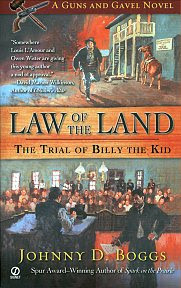
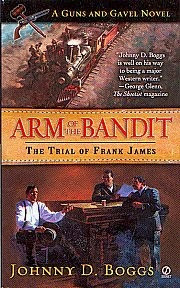 READERS INTERVIEW—JOHNNY D. BOGGS
Do you mark or write in your books as you read, or does the idea horrify you?
READERS INTERVIEW—JOHNNY D. BOGGS
Do you mark or write in your books as you read, or does the idea horrify you?
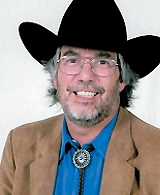 I try not to write in research books I’ve checked out from the local library or through interlibrary loan, but if it’s a book I own and am using for research or have to review for a magazine, there’s a good chance I’ll mark it up here and there. I also remember a professor in college who said he would make “B.S.” notations where deserved. I’ve been known to do that, too.
I try not to write in research books I’ve checked out from the local library or through interlibrary loan, but if it’s a book I own and am using for research or have to review for a magazine, there’s a good chance I’ll mark it up here and there. I also remember a professor in college who said he would make “B.S.” notations where deserved. I’ve been known to do that, too.How do you keep your place in a book? Bookmark? Dog-ears? Laying the book flat open?
Yes. I have no preference. I’m a bookmark-dog-ear-flat-open kind of place-keeper.
Do you have a favorite snack to eat while you read?
I don’t eat while I read. I eat when I eat. I read when I read.
Do you read mostly fiction or nonfiction or an even mix?
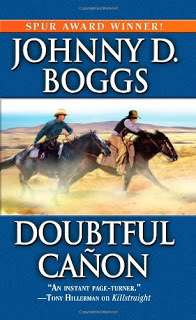 It’s usually more nonfiction. A lot of that’s for research, of course. But I’m also hounded a lot to read a pre-published novel to blurb, so if you’re considering asking me to blurb your book you should know how much I absolutely HATE to be asked to blurb books. And when I read for pleasure, I’d prefer to read something outside of my recognized genre. Right now Walt Whitman’s Leaves of Grass is on my nightstand and Tolstoy’s War and Peace is on my Kindle. I’m also reading Ron Cherow’s Grantand taking my sweet time because it’s so brilliant.
It’s usually more nonfiction. A lot of that’s for research, of course. But I’m also hounded a lot to read a pre-published novel to blurb, so if you’re considering asking me to blurb your book you should know how much I absolutely HATE to be asked to blurb books. And when I read for pleasure, I’d prefer to read something outside of my recognized genre. Right now Walt Whitman’s Leaves of Grass is on my nightstand and Tolstoy’s War and Peace is on my Kindle. I’m also reading Ron Cherow’s Grantand taking my sweet time because it’s so brilliant.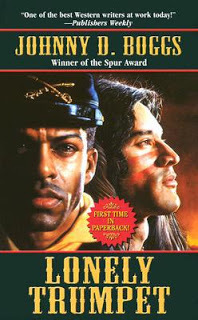 Do you always read to the end of a chapter or can you stop anywhere?
Do you always read to the end of a chapter or can you stop anywhere?
Usually, I make it to the end of a chapter. Actually, before I start reading a book, I’ll typically see how many chapters are in the book. Then I can ballpark it to figure out that if I read X chapters a night I can have this book finished in roughly Z days. Of course, math was never my strong suit.
Do you stop reading to look up unfamiliar words?
Not only do I do that, I also keep a notepad handy so I can jot down cool words that I’d like to use in a novel.
How do you organize your books—by genre, title, author’s last name, random stacks?
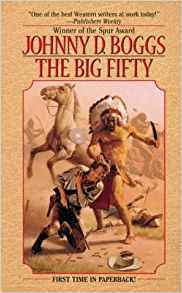 The nonfiction books are on shelves according, more or less, to subject matter. All right, let’s be specific: In my office, the shelves across from my desk and the shelves to the left are Western, frontier, Revolutionary War and Civil War nonfiction books, with miscellaneous fiction and nonfiction on the highest shelves that need a ladder to reach. Except for the books I’ve tossed onto the shelves till I can find a better place to put them. The shelves behind me and to my left house reference books, Shakespeare, Milton and Malory. Immediately behind me are more reference books, dictionaries—including an 1861 Webster’s Unabridged and an 1876 Common School—an 1883 Roget’s Thesaurus, and more history books. Usually piled on my desk are books I need for my current project or projects. The books behind me and to my right are first-edition Western titles that might help finance my son’s college education. There are several books piled on some shelves in the closets, a lot of fiction, mystery, pulps, science fiction, maybe some miscellaneous nonfiction, plays and books I tossed in there because I was in a hurry. I try not to open those doors.
The nonfiction books are on shelves according, more or less, to subject matter. All right, let’s be specific: In my office, the shelves across from my desk and the shelves to the left are Western, frontier, Revolutionary War and Civil War nonfiction books, with miscellaneous fiction and nonfiction on the highest shelves that need a ladder to reach. Except for the books I’ve tossed onto the shelves till I can find a better place to put them. The shelves behind me and to my left house reference books, Shakespeare, Milton and Malory. Immediately behind me are more reference books, dictionaries—including an 1861 Webster’s Unabridged and an 1876 Common School—an 1883 Roget’s Thesaurus, and more history books. Usually piled on my desk are books I need for my current project or projects. The books behind me and to my right are first-edition Western titles that might help finance my son’s college education. There are several books piled on some shelves in the closets, a lot of fiction, mystery, pulps, science fiction, maybe some miscellaneous nonfiction, plays and books I tossed in there because I was in a hurry. I try not to open those doors.The shelves next to our home’s front door hold autographed books, special books, books like that. The bookcase in the living room houses my Max Evans collection, a set of Carl Sandburg’s Lincoln volumes, more autographed books, first editions and other books I cherish. The cookbooks are in the pantry.
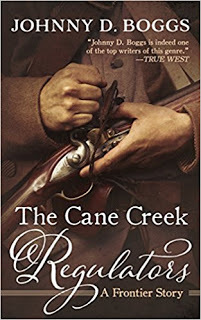 If you make it to the den, the bookcase facing the hallway holds Western fiction. Mostly paperbacks. The giant shelf next to the entertainment center is where I keep my film histories, most of my nonfiction baseball books and some books on art. Yes, there is a shelf of titles I’ve written in the den, too. Then there’s the nightstand in the bedroom and the storage shed out past the coyote fence. Plus, boxes in the garage shelves. And some in the back of my Jeep. And the glove box or underneath the seat in case I’m waiting for my son to finish baseball or jazz practice.
If you make it to the den, the bookcase facing the hallway holds Western fiction. Mostly paperbacks. The giant shelf next to the entertainment center is where I keep my film histories, most of my nonfiction baseball books and some books on art. Yes, there is a shelf of titles I’ve written in the den, too. Then there’s the nightstand in the bedroom and the storage shed out past the coyote fence. Plus, boxes in the garage shelves. And some in the back of my Jeep. And the glove box or underneath the seat in case I’m waiting for my son to finish baseball or jazz practice.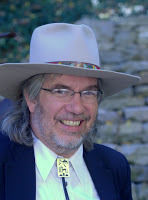 What is the last book you read?
What is the last book you read?
Fiction: In The Distance by Hernan Diaz. Nonfiction: Johnny’s Cash & Charley’s Pride: Lasting Legends and Untold Adventures in Country Music by Peter Cooper.
What is the last book you bought?
Tom Wolfe’s The Right Stuff. When he died, I was reminded that I loaned my copy of that book, a Quality Paperback Book Club edition, to a friend who promptly left it on an airplane. So I decided to forgive her 30 years later and reward myself with a first-edition, first-printing hardcover.
What was the last novel to make you laugh?
Norwood by Charles Portis. I had to speak on Charles Portis’s True Grit at a library program in Texas in 2017, so I went on a Portis binge-read.
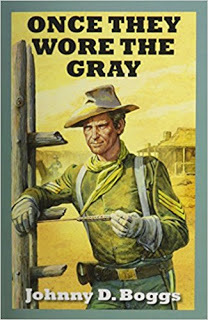 What was the last novel to make you cry?
What was the last novel to make you cry?
Jack Schaefer’s Monte Walsh. I reread it a year or so back and the ending tears me up every time.
Do you read one book at a time or have several on the go at the same time?
There’s a pile on my nightstand and several on my Kindle. Some for research. Some for joy. Some out of curiosity. Some for a paycheck. Some for education.
What was a book you loved as a child?
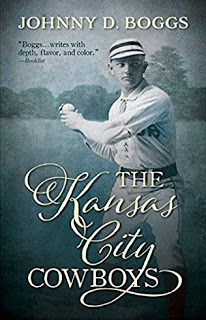 The Three Musketeers
by Alexandre Dumas. I was 12, had just gone to see director Richard Lester’s movie. But instead of being wowed by the swashbuckling adventure and humor that made the movie such a success, what kept me reading were the political intrigue and 17th Century cloak-and-dagger stuff. I mean, few 12-year-olds were reading dense fiction originally written in French over summer break in 1974. That was the first novel that really transported me from the tobacco fields and swamps of South Carolina and showed me how powerful fiction could be.
The Three Musketeers
by Alexandre Dumas. I was 12, had just gone to see director Richard Lester’s movie. But instead of being wowed by the swashbuckling adventure and humor that made the movie such a success, what kept me reading were the political intrigue and 17th Century cloak-and-dagger stuff. I mean, few 12-year-olds were reading dense fiction originally written in French over summer break in 1974. That was the first novel that really transported me from the tobacco fields and swamps of South Carolina and showed me how powerful fiction could be. 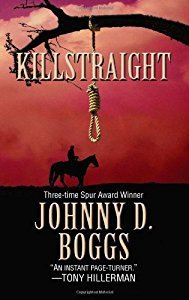 What book made you want to be a writer?
What book made you want to be a writer?
Well, it likely started with The Hardy Boys, Johnny Tremain and Treasure Island, but a couple of short story collections, The Hanging Tree and Other Stories by Dorothy M. Johnson and The Collected Stories of Jack Schaefer, seriously turned me into writing. Schaefer and Johnson showed me that Western fiction could be literate and character driven and just so dang real. And when I read A.B. Guthrie Jr.’s The Big Sky, my fate and career path were sealed. Johnson, Schaefer and Guthrie were not the first to make me want to write, but they taught me what kind of writer I wanted to be.
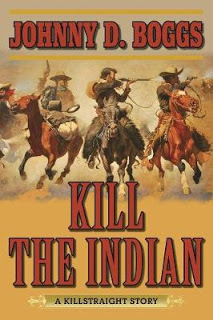 What is your favorite classic?
What is your favorite classic?
The Adventures of Tom Sawyer . Tom and Becky. Aunt Polly. Huck. Injun Joe. It was the first Mark Twain novel I had to read, and it hooked me on reading everything by Mark Twain that I could find. He remains my favorite author even if To Kill a Mockingbird is my favorite novel. And while I know Huckleberry Finn is his masterpiece, I always come back to Tom Sawyer. That said, I tick off many people when I say that Twain’s best book is Personal Recollections of Joan of Arc.
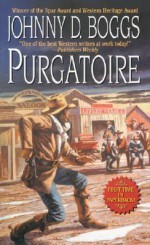 What classic have you never been able to read?
What classic have you never been able to read?
There are plenty of classics I’ve never read, many I’ve read and forgotten, but I am president of the I Hate F. Scott Fitzgerald Anti-Fan Club. I finished The Great Gatsby—because I had to in high school—and, as an adult, managed to get through Tender is the Night and This Side of Paradise, so now I refuse to even crack the spine on The Beautiful and Damned. I despise his work. There are only two members in this club, and I’m sworn to secrecy not to reveal my friend Nancy Plain, a brilliant writer of nonfiction for young readers, as my co-conspirator. We do, however, welcome new members. Our motto: Fitzgerald sucks.
What classic have you pretended to have read?
Let’s see how far I get through Tolstoy.
Do you have a favorite time/place to read?
Not really. I’m an ex-newspaper journalist. I can read and write anywhere, anytime.
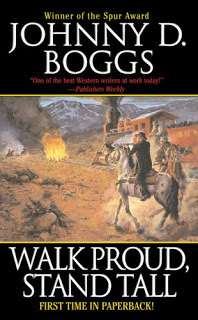 Do you prefer series books or standalones?
Do you prefer series books or standalones?
I tend to prefer standalones. That said, I’m a big fan of Raymond Chandler’s Marlowe novels and Tony Hillerman’s Navajo mysteries. But when I’ve written continuing characters, along around Book 3 I’m ready to kill off everyone.
What genre would you read if you were limited to one?
Post-apocalyptic science fiction. But only from the 1950s and 1960s. Plus Cormac McCarthy’s The Road.
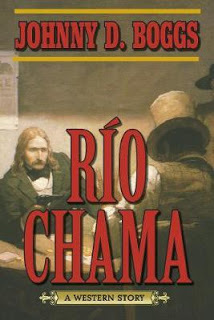 Is there a specific book or author you find yourself recommending over and over?
Is there a specific book or author you find yourself recommending over and over?
For fiction, John Steinbeck’s The Grapes of Wrath and William P. McGivern’s 1950s hard-boiled mysteries. For nonfiction, Philip Caputo’s A Rumor of War and everything by Hampton Sides or Michael Wallis.
Is there a book you’ve returned to again and again?
Everything by Twain and Harper Lee’s To Kill a Mockingbird.
What is your favorite book to movie adaptation?
Harper Lee’s To Kill a Mockingbird. Perfect novel. Perfect movie.
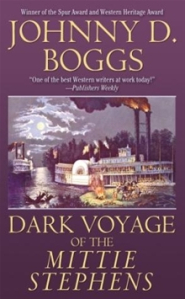 What book would you like to see as a movie?
What book would you like to see as a movie?
Elmer Kelton’s The Time It Never Rained. But keep in mind that long ago it was Pat Conroy’s The Lords of Discipline and then Conroy’s The Prince of Tides. Then they made those into movies. Then I saw those movies.
What imaginary place from a book would you want to live?
Steinbeck’s Cannery Row.
What fictional character(s) would you like to have a beer with?
Philip Marlowe (but only if he acts like Dick Powell). Falstaff. Rooster Cogburn (providing he has checked his weapons with Judge Parker). Tina from A Bell for Adano. And Long John Silver from Treasure Island.
Published on June 05, 2018 13:45
THE WORDSLINGER TRAILS—JOHNNY D. BOGGS
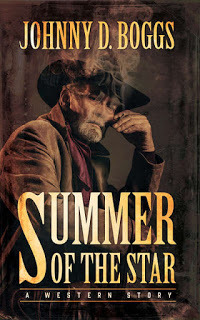
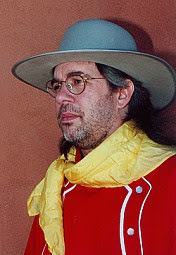 THE WORDSLINGER TRAILS—JOHNNY D. BOGGS
Johnny D. Boggs is a writer’s writer. He is a professional wordslinger at the top of his trade able to apply his exceptional craft to any literary form. Award winning Western novels, short stories, non-fiction articles, young adult fiction, and more are all within his oeuvre. Since becoming a full-time fiction writer he has won four Spur Awards from the Western Writers of America and a prestigious Western Heritage Wrangler Award.
THE WORDSLINGER TRAILS—JOHNNY D. BOGGS
Johnny D. Boggs is a writer’s writer. He is a professional wordslinger at the top of his trade able to apply his exceptional craft to any literary form. Award winning Western novels, short stories, non-fiction articles, young adult fiction, and more are all within his oeuvre. Since becoming a full-time fiction writer he has won four Spur Awards from the Western Writers of America and a prestigious Western Heritage Wrangler Award.
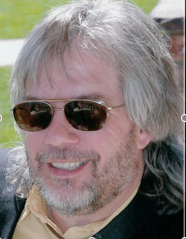 Born in 1962, and growing up on a farm in Timmonsville, South Carolina, Boggs knew he wanted to be a writer at an early age. He also showed an immediate affinity for the business side of writing. Starting in the third grade, Boggs began writing his own stories—featuring archetypical popular characters—and selling them to his classmates. Unexpectedly, his profits outstripped picking peanuts, hanging tobacco, odd-jobs, and other traditional boyhood tasks.
Born in 1962, and growing up on a farm in Timmonsville, South Carolina, Boggs knew he wanted to be a writer at an early age. He also showed an immediate affinity for the business side of writing. Starting in the third grade, Boggs began writing his own stories—featuring archetypical popular characters—and selling them to his classmates. Unexpectedly, his profits outstripped picking peanuts, hanging tobacco, odd-jobs, and other traditional boyhood tasks.
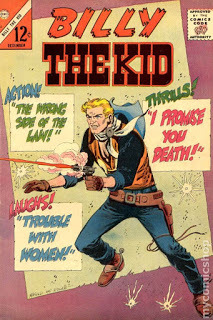 Boggs’ love of the Western genre grew from watching Gunsmoke, The Virginian, and other Western TV shows with his dad. A distant Charleston TV station—which could be watched if his family’s TV antenna was positioned just right—showed a lot of Western movies, including John Wayne Theater on Saturday afternoons. It also enabled him to watch and rewatch Gunfight at the OK Corral uncountable times. The West was also “…a long, long way from the swamps and tobacco fields of South Carolina,” which to its allure.
Boggs’ love of the Western genre grew from watching Gunsmoke, The Virginian, and other Western TV shows with his dad. A distant Charleston TV station—which could be watched if his family’s TV antenna was positioned just right—showed a lot of Western movies, including John Wayne Theater on Saturday afternoons. It also enabled him to watch and rewatch Gunfight at the OK Corral uncountable times. The West was also “…a long, long way from the swamps and tobacco fields of South Carolina,” which to its allure.
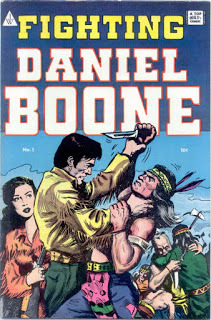 His original love of the six-gun genre was further nurtured by comic books featuring Daniel Boone and Billy the Kid, which he read until they were tattered and frayed. When he was older, the Western section of nearby Ray’s Novel Shop provided fodder for his fertile imagination. The stories stirred something deep in his psyche and he began to see the West as much more than a physical location. For Boggs, the West encompassed an ideal with the power to induce a spiritual connection with readers.
His original love of the six-gun genre was further nurtured by comic books featuring Daniel Boone and Billy the Kid, which he read until they were tattered and frayed. When he was older, the Western section of nearby Ray’s Novel Shop provided fodder for his fertile imagination. The stories stirred something deep in his psyche and he began to see the West as much more than a physical location. For Boggs, the West encompassed an ideal with the power to induce a spiritual connection with readers.
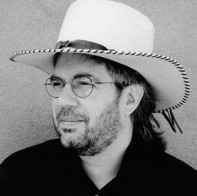 While studying journalism at the University of Carolina, Boggs also immersed himself in film and theatre courses, fueling his passion for film history. Discussing the accuracy of Western movies, Boggs contends, “Films are supposed to entertain…When I watch a movie, I want to be entertained. My Darling Clementine, which got the year of the gunfight at the O.K. Corral wrong, entertains. I have to admit Chisum is a guilty pleasure. I even like They Died With Their Boots On. But Son of the Morning Star and Gods and Generals, which got the history right, failed at entertainment.”
While studying journalism at the University of Carolina, Boggs also immersed himself in film and theatre courses, fueling his passion for film history. Discussing the accuracy of Western movies, Boggs contends, “Films are supposed to entertain…When I watch a movie, I want to be entertained. My Darling Clementine, which got the year of the gunfight at the O.K. Corral wrong, entertains. I have to admit Chisum is a guilty pleasure. I even like They Died With Their Boots On. But Son of the Morning Star and Gods and Generals, which got the history right, failed at entertainment.”
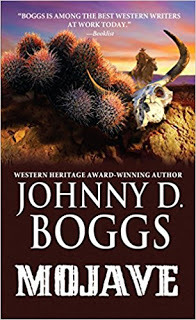 Obtaining his journalism degree in 1984, his literary ambitions guided him to follow Horace Greeley’s oft-quoted advice to go west. He ended up in Texas where he spent fifteen years working for the Dallas Times Herald and the Fort Worth Star-Telegram, becoming an assistant sports editor for both publications. Eventually, he burned out on the Texas weather, the Dallas traffic, and big city crime. He joked to his wife about moving to New Mexico to get away from it all. She, however, took him seriously and went all in on the idea. Several months later, the couple packed up and headed for Santa Fe, were they have resided ever since.
Obtaining his journalism degree in 1984, his literary ambitions guided him to follow Horace Greeley’s oft-quoted advice to go west. He ended up in Texas where he spent fifteen years working for the Dallas Times Herald and the Fort Worth Star-Telegram, becoming an assistant sports editor for both publications. Eventually, he burned out on the Texas weather, the Dallas traffic, and big city crime. He joked to his wife about moving to New Mexico to get away from it all. She, however, took him seriously and went all in on the idea. Several months later, the couple packed up and headed for Santa Fe, were they have resided ever since.
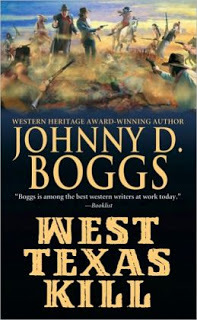 In moving to Santa Fe, Boggs didn’t just leave Texas behind. He also left behind the daily grind of journalism, turning to writing novels and articles for his livelihood…“I was doing what I want to do and, for the most part, writing what I want to write, even if I might sometimes wonder how I’ll pay the bills.”
In moving to Santa Fe, Boggs didn’t just leave Texas behind. He also left behind the daily grind of journalism, turning to writing novels and articles for his livelihood…“I was doing what I want to do and, for the most part, writing what I want to write, even if I might sometimes wonder how I’ll pay the bills.”
His love for Westerns remained strong, but siren song of the television and movie version of the Wild West began to fade. He replaced it with a fascination for the gritty reality of the American West, its true history and real life characters.
While staking claim to Mark Twain as his favorite writer, Boggs also found inspiration in the works of Jack Schaefer (Shane) and Montana’s most successful Western writer—Dorothy M. Johnson. Boggs considers both authors literary fiction masters who just happened to write about the West.
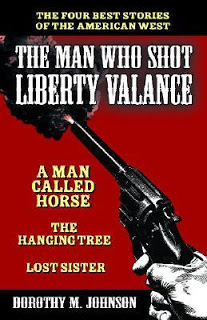 Johnson was known as a witty, gritty, little bobcat of a woman. Refreshingly, her Western characters were not invincible. In stories like The Hanging Tree, A Man Called Horse, and The Man Who Shot Liberty Valance (all of which were made into movies), Johnson conceived the narratives by questioning the Western myth of manly bravado—“I asked myself, what if one of these big bold gunmen who are having the traditional walkdown is not fearless, and what if he can’t even shoot. Then what have you got?”
Johnson was known as a witty, gritty, little bobcat of a woman. Refreshingly, her Western characters were not invincible. In stories like The Hanging Tree, A Man Called Horse, and The Man Who Shot Liberty Valance (all of which were made into movies), Johnson conceived the narratives by questioning the Western myth of manly bravado—“I asked myself, what if one of these big bold gunmen who are having the traditional walkdown is not fearless, and what if he can’t even shoot. Then what have you got?”
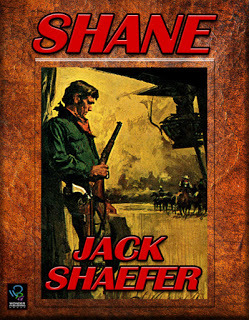 Jack Schaefer wrote other novels, but the giant shadow of Shane eclipses them all. In creating the character from his most famous work, Schaefer devises a stone killer who finds himself suffering in anguish over the struggle to do right when his every instinct wants to do otherwise. This explorations of human mortality evokes from the reader admiration, respect, and finally adoration for a man trying to save himself from his own evil. Like the works of Dorothy M. Johnson, Shane is a Western, but it eclipses the genre in a way few other novels can accomplish.
Jack Schaefer wrote other novels, but the giant shadow of Shane eclipses them all. In creating the character from his most famous work, Schaefer devises a stone killer who finds himself suffering in anguish over the struggle to do right when his every instinct wants to do otherwise. This explorations of human mortality evokes from the reader admiration, respect, and finally adoration for a man trying to save himself from his own evil. Like the works of Dorothy M. Johnson, Shane is a Western, but it eclipses the genre in a way few other novels can accomplish.
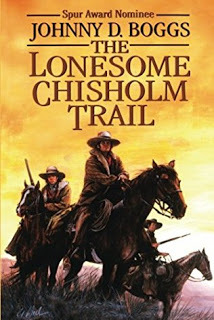 These strong influences led Boggs to create a West based on reality, but interwoven with a mythical consciousness. Rooted in truth, his Westerns connect to genre readers on an emotional level—speaking loudly to those who are fascinated with the real West, but sill love the traditional tropes of Western fiction. Of his approach, Boggs maintains, “Facts can be confining. In fiction, my imagination can take over…I try to make my novels fairly truthful, but I always say, don’t quote me in your term paper.”
These strong influences led Boggs to create a West based on reality, but interwoven with a mythical consciousness. Rooted in truth, his Westerns connect to genre readers on an emotional level—speaking loudly to those who are fascinated with the real West, but sill love the traditional tropes of Western fiction. Of his approach, Boggs maintains, “Facts can be confining. In fiction, my imagination can take over…I try to make my novels fairly truthful, but I always say, don’t quote me in your term paper.”
Boggs is the arch-enemy of editors who put try to force physical and cultural restrictions on Westerns. “What draws me into writing a novel or short story are the characters and the land…I don’t like fences and I don’t like boundaries. I like to write about what I want to write about.”
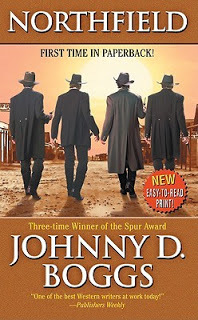 One of Boggs most accomplished novels is Northfield. In it, Boggs skillfully weaves twenty-three first-person viewpoints telling the tale of the James-Younger gang’s attempt to rob the First National Bank of Northfield, and the disasterous consequences of the aftermath. Juggling the multiple viewpoints in Northfield proved a major challenge, but one Boggs gladly accepted...”I’d read and seen so much hogwash about what happened in Northfield, I wanted to tell the story as accurately as possible.”
One of Boggs most accomplished novels is Northfield. In it, Boggs skillfully weaves twenty-three first-person viewpoints telling the tale of the James-Younger gang’s attempt to rob the First National Bank of Northfield, and the disasterous consequences of the aftermath. Juggling the multiple viewpoints in Northfield proved a major challenge, but one Boggs gladly accepted...”I’d read and seen so much hogwash about what happened in Northfield, I wanted to tell the story as accurately as possible.” To fill in historical gaps, Boggs gives voice not only to the major outlaws, but also to the often overlooked minor characters. The words of these real people—ordinary farmers, business owners, members of the James and Younger families, and the forces of the law—complete the story as accurately as it can be portrayed while still telling a rousing saga of the West.
Boggs has a great appreciation for the history of the West. This extends far beyond Main Street showdowns, crooked poker games, and land disputes. He looks for the uncommon and the overlooked.
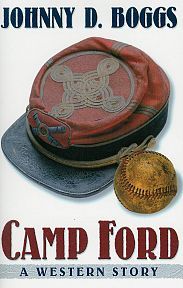 In his novel Camp Ford, Boggs intertwines the Civil War, the West, and baseball. With its theme of Union soldiers introducing baseball to various parts of the country during the Civil War, Camp Fordis based on historical fact. Chronicling the amazing changes America underwent during the span of one man's life, Camp Ford starts with the 1946 World Series as 99-year-old Win MacNaughton recalls the greatest baseball game of his entire life, and the events leading to that 1865 contest between a ragtag collection of Union prisoners of war against a squad of Confederate prison guards. Camp Ford is a Western, but it is filled with pathos, friendship, honor, betrayal, and a sly humor, which make it so much more than a simple six-gun shoot ‘em up.
In his novel Camp Ford, Boggs intertwines the Civil War, the West, and baseball. With its theme of Union soldiers introducing baseball to various parts of the country during the Civil War, Camp Fordis based on historical fact. Chronicling the amazing changes America underwent during the span of one man's life, Camp Ford starts with the 1946 World Series as 99-year-old Win MacNaughton recalls the greatest baseball game of his entire life, and the events leading to that 1865 contest between a ragtag collection of Union prisoners of war against a squad of Confederate prison guards. Camp Ford is a Western, but it is filled with pathos, friendship, honor, betrayal, and a sly humor, which make it so much more than a simple six-gun shoot ‘em up.
While both Northfield and Camp Fordshow Boggs’ penchant for historically based storytelling, he also writes excellent straight ahead action/adventure style Westerns. The historical research is still there in the fine details, but the action is front and center.
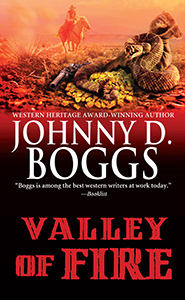 In the opening scene of Valley of Fire, a nun and an outlaw walk into a jail...Okay, the outlaw walked in before the nun got there, but they definitely leave together in a blaze of violence. Their actions upset a large contingent of unsavory characters, ensuring the relentless action never flags. While not exactly a sister of mercy, the nun is really a nun and she makes sure there is hell to pay before the gold hidden in the Valley of Fire can be recovered.
In the opening scene of Valley of Fire, a nun and an outlaw walk into a jail...Okay, the outlaw walked in before the nun got there, but they definitely leave together in a blaze of violence. Their actions upset a large contingent of unsavory characters, ensuring the relentless action never flags. While not exactly a sister of mercy, the nun is really a nun and she makes sure there is hell to pay before the gold hidden in the Valley of Fire can be recovered.
Boggs and other modern Western wordslingers are ensuring the genre continues to thrive as a vibrant style of storytelling. As Boggs himself puts it, “I think Westerns have always been the ugly stepchild when it comes to genre fiction, but it’s still there despite countless epitaphs and death songs over the past several decades. People still like those stories...Writing Westerns is keeping me busier than ever...”
Published on June 05, 2018 13:44
May 25, 2018
NOTHING BUT THE TRUTH (ALMOST)
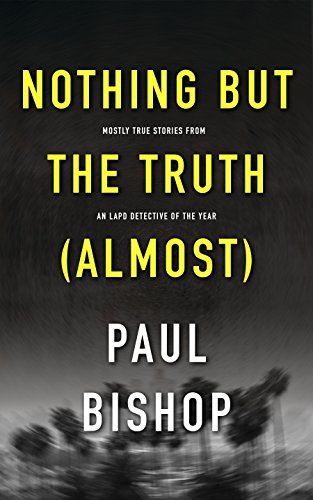 NOTHING BUT THE TRUTH (ALMOST)
NOTHING BUT THE TRUTH (ALMOST)My new release from Wolfpack Publishing...Is truth stranger than fiction...Quite possibly...
My first Amazon #1 ranking was certainly a happy surprise. True it's in a very small niche, but it still says #1...
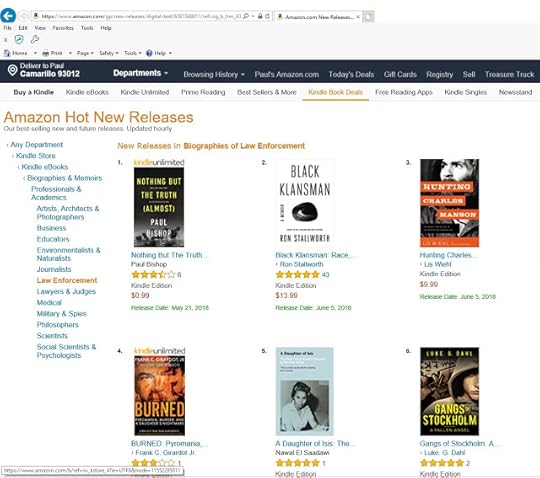 NOTHING BUT THE TRUTH (ALMOST)
NOTHING BUT THE TRUTH (ALMOST)Taking stories from his exceptional career with the Los Angeles Police Department, novelist, screenwriter, and television personality Paul Bishop shares some of the funny, the dangerous, and the poignant cases from his 35 years on the job. A nationally recognized behaviorist and deception detection expert, Paul’s high profile Special Assault Units regularly produced the highest number of detective initiated arrests and highest crime clearance rates in the city. Twice honored as LAPD’s Detective of the Year, he also received the Quality and Productivity Commission Award from the City of Los Angeles.
Starring as the lead interrogator and driving force behind the ABC TV reality show Take the Money and Run from producer Jerry Bruckheimer, Paul displayed his unique skills as a human lie detector to a nationwide audience. He is now a highly sought after resource for private companies faced with in-house data breaches, industrial espionage, and corporate sabotage. He is the author of fifteen novels and has written numerous scripts for episodic television and feature films. Nothing But The Truth (Almost)...provides an insight into Paul skills and fascinating profession.
Published on May 25, 2018 19:41
May 20, 2018
THE WORDSLINGER TRAILS—RALPH COMPTON
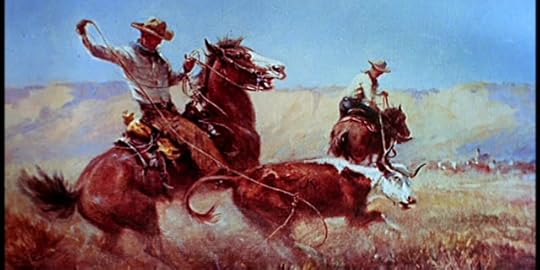 THE WORDSLINGER TRAILS RIDING TALL RALPH COMPTON (April 11, 1934 – September 16, 1998) Not many writers stand six-foot-eight-inches tall without their boots. Neither have many written twenty-three books in eight years, with several selling over a million copies and hitting the USA TodayBest-Seller List. The only wordslinger to hit the mark in both classifications is Western reader’s favorite, Ralph Compton.
THE WORDSLINGER TRAILS RIDING TALL RALPH COMPTON (April 11, 1934 – September 16, 1998) Not many writers stand six-foot-eight-inches tall without their boots. Neither have many written twenty-three books in eight years, with several selling over a million copies and hitting the USA TodayBest-Seller List. The only wordslinger to hit the mark in both classifications is Western reader’s favorite, Ralph Compton.
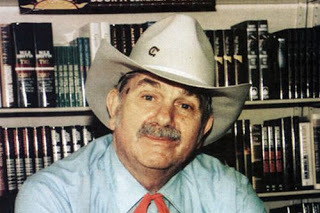 Wearing his boots and his cowboy hat, the late Compton’s wiry frame rose head and shoulders above the crowd whenever he went. His most amazing accomplishment, however, was not growing tall, but his prolific telling of Western tall tales. At fifty-six-years-old, having little prior writing experience, he sat down and began the opening chapter of his first his first Western—The Goodnight Trail. In the next eight years, he wrote twenty-two more Westerns before cancer took him home at age sixty-four. His canon of work became so popular, his publisher (Signet) used his legacy to build the Ralph Compton Brand. There have since been eight-two Westerns—authored by some of the best writers in the genre—published under the Ralph Comptonbanner.
Wearing his boots and his cowboy hat, the late Compton’s wiry frame rose head and shoulders above the crowd whenever he went. His most amazing accomplishment, however, was not growing tall, but his prolific telling of Western tall tales. At fifty-six-years-old, having little prior writing experience, he sat down and began the opening chapter of his first his first Western—The Goodnight Trail. In the next eight years, he wrote twenty-two more Westerns before cancer took him home at age sixty-four. His canon of work became so popular, his publisher (Signet) used his legacy to build the Ralph Compton Brand. There have since been eight-two Westerns—authored by some of the best writers in the genre—published under the Ralph Comptonbanner.
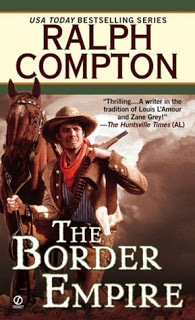 On US 411, near Odenville, Alabama, drivers pass a sign claiming Home of Ralph Compton. It denotes the beginning of a six mile trek through the woods to the log cabin with the dirt floor where Compton was born. In his autobiography, Compton stated, “You walked three miles along the Seaboard Railroad track, climbed a cut bank and trudged another three miles through the woods.” Born in 1937, at the tail end of the Depression, Compton’s family struggled with the harsh realities of poverty, “It seemed like we all started poor and went downhill from there.” His mother had a sixth grade education; his father, fifth grade. “By the time FDR’s ‘team of mules, seed and fertilizer’ stake got to us, there were no mules.” His father settled for oxen instead of mules, along with seed and fertilizer. Inexperienced at best when it came to planting a crop, Compton said of his father, “In his best year, he made almost enough to repay what he owed the government.”
On US 411, near Odenville, Alabama, drivers pass a sign claiming Home of Ralph Compton. It denotes the beginning of a six mile trek through the woods to the log cabin with the dirt floor where Compton was born. In his autobiography, Compton stated, “You walked three miles along the Seaboard Railroad track, climbed a cut bank and trudged another three miles through the woods.” Born in 1937, at the tail end of the Depression, Compton’s family struggled with the harsh realities of poverty, “It seemed like we all started poor and went downhill from there.” His mother had a sixth grade education; his father, fifth grade. “By the time FDR’s ‘team of mules, seed and fertilizer’ stake got to us, there were no mules.” His father settled for oxen instead of mules, along with seed and fertilizer. Inexperienced at best when it came to planting a crop, Compton said of his father, “In his best year, he made almost enough to repay what he owed the government.”
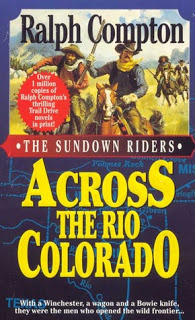 Compton graduated from St. Clair County High School in Odenville—a major accomplishment for a young boy in worn out clothes and rarely a full meal. Compton states, “In those days, welfare families were not looked on with favor. There were four of us, and we received the staggering sum of thirty-nine dollars a month. I owe my high school graduation to understanding teachers who provided odd jobs so I had the bare necessities.” He points to his high school principal, Nancy Wilson (to whom he dedicated his first Western, The Goodnight Trail), for his love of reading and his ability to read with comprehension and retention. “Because I did read, she moved me ahead, encouraging me to read literature and history more advanced than my grade required. Before my graduation, I knew I wanted to write, although I wasn’t sure what.”
Compton graduated from St. Clair County High School in Odenville—a major accomplishment for a young boy in worn out clothes and rarely a full meal. Compton states, “In those days, welfare families were not looked on with favor. There were four of us, and we received the staggering sum of thirty-nine dollars a month. I owe my high school graduation to understanding teachers who provided odd jobs so I had the bare necessities.” He points to his high school principal, Nancy Wilson (to whom he dedicated his first Western, The Goodnight Trail), for his love of reading and his ability to read with comprehension and retention. “Because I did read, she moved me ahead, encouraging me to read literature and history more advanced than my grade required. Before my graduation, I knew I wanted to write, although I wasn’t sure what.”
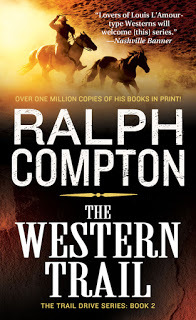 Compton served in the Army during the Korean War. When he returned home, he was still unsure of his career direction. He joined forces with his brother, Bill, a skilled guitarist with a good voice. They formed a bluegrass group, and set out to play the local circuit of legion halls, armories, and schools. They played live on local radio stations, often racing from station to station to reach the widest audience possible. Compton recalled, “Most little stations provided time for free on Saturday afternoon, usually fifteen to thirty minutes for those enthusiastic enough—or dumb enough—to donate their talent for the exposure.”
Compton served in the Army during the Korean War. When he returned home, he was still unsure of his career direction. He joined forces with his brother, Bill, a skilled guitarist with a good voice. They formed a bluegrass group, and set out to play the local circuit of legion halls, armories, and schools. They played live on local radio stations, often racing from station to station to reach the widest audience possible. Compton recalled, “Most little stations provided time for free on Saturday afternoon, usually fifteen to thirty minutes for those enthusiastic enough—or dumb enough—to donate their talent for the exposure.”
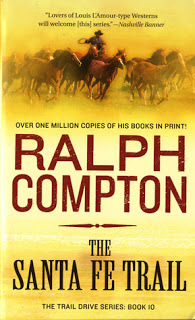 In 1960, Bill moved on to play with Country Boy Eddie (Gordon Edwards Burns), a singer, fiddler and guitarist who hosted the long-running Country Boy Eddie Show on Alabama’s WBRC-TV station. Ralph traveled to Nashville where he struggled as a songwriter. He co-founded The Rhinestone Rooster, a tabloid magazine, but quickly went broke. He borrowed money to keep the magazine afloat, but quickly went broke again. Not willing to give up, he turned The Rhinestone Rooster into a record label, but still did not find enough success to make the venture worthwhile. Jobs as a radio announcer, a newspaper columnist, and other odd jobs followed. In the summer of 1988 (“When I was pretty well fed up with the music business...”), the then fifty-four-year-old Compton began writing a novel. He wrote what he knew, “...a Southern novel, a hard times tale of growing up during the depression.”
In 1960, Bill moved on to play with Country Boy Eddie (Gordon Edwards Burns), a singer, fiddler and guitarist who hosted the long-running Country Boy Eddie Show on Alabama’s WBRC-TV station. Ralph traveled to Nashville where he struggled as a songwriter. He co-founded The Rhinestone Rooster, a tabloid magazine, but quickly went broke. He borrowed money to keep the magazine afloat, but quickly went broke again. Not willing to give up, he turned The Rhinestone Rooster into a record label, but still did not find enough success to make the venture worthwhile. Jobs as a radio announcer, a newspaper columnist, and other odd jobs followed. In the summer of 1988 (“When I was pretty well fed up with the music business...”), the then fifty-four-year-old Compton began writing a novel. He wrote what he knew, “...a Southern novel, a hard times tale of growing up during the depression.”
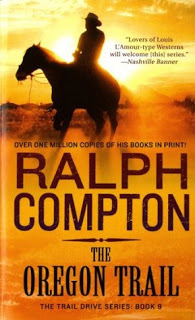 Bob Robertson, a literary agent who read the manuscript, felt Compton’s writing showed promise. He didn’t, however, believe he could sell the novel to a publisher as the market was saturated with similar coming of age tales. Robertson was impressed enough with Compton’s writing to ask him a straightforward question...”Can you write a western?” Compton’s reply would ultimately change his life...“I don’t know. I like Westerns, but I’ve never written one. Let me try.”
Bob Robertson, a literary agent who read the manuscript, felt Compton’s writing showed promise. He didn’t, however, believe he could sell the novel to a publisher as the market was saturated with similar coming of age tales. Robertson was impressed enough with Compton’s writing to ask him a straightforward question...”Can you write a western?” Compton’s reply would ultimately change his life...“I don’t know. I like Westerns, but I’ve never written one. Let me try.”
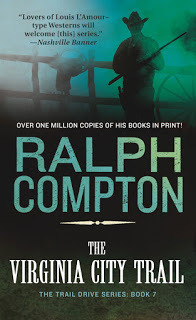 Writing feverishly in every spare moment around his forty-hour a week nighttime work schedule, he completed a shoot-‘em-up 185 page manuscript. However, when he showed it to Robertson, the agent told him it was good, but had nothing to distinguish it from hundreds of other Westerns. The agent then offered more sage advice, “Write the kind of Western you like. And plan on writing at least three books, a minimum of three-hundred and fifty pages each.” This seemed overwhelming to Compton, who felt he’d already done the best he could. But Robertson continued to encourage him. The agent wanted a potential series, something with a hook that had not been done before. Over the next several weeks Compton and Robertson kicked around ideas. They wanted a concept to embody all the exciting aspects of the Western, yet be unique in its presentation. From their collaboration, the concept of the Trail Drive series was created.
Writing feverishly in every spare moment around his forty-hour a week nighttime work schedule, he completed a shoot-‘em-up 185 page manuscript. However, when he showed it to Robertson, the agent told him it was good, but had nothing to distinguish it from hundreds of other Westerns. The agent then offered more sage advice, “Write the kind of Western you like. And plan on writing at least three books, a minimum of three-hundred and fifty pages each.” This seemed overwhelming to Compton, who felt he’d already done the best he could. But Robertson continued to encourage him. The agent wanted a potential series, something with a hook that had not been done before. Over the next several weeks Compton and Robertson kicked around ideas. They wanted a concept to embody all the exciting aspects of the Western, yet be unique in its presentation. From their collaboration, the concept of the Trail Drive series was created.
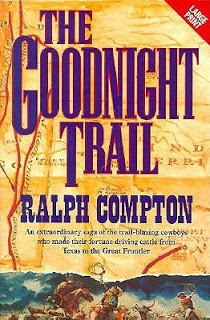 In January of 1990, after much sweat and research, Compton presented Robertson with a detailed synopsis of the first three books in the series—The Goodnight Trail, The Western Trail, and The Chisholm Trail. Robertson enthusiastically approved. Eight months later, Compton finished writing The Goodnight Trail, a rip-roaring western about the cattle drive which established a new route from Texas to Colorado. Compton skillfully mixed fact with fiction as told the tale former Texas Rangers Benton McCaleb, Will Elliot, and Brazos Gifford to ride the trail alongside the real life Charles Goodnight. Compton’s characters were fresh and alive, jumping off the page with the historical background accuracy that would become his trademark.
In January of 1990, after much sweat and research, Compton presented Robertson with a detailed synopsis of the first three books in the series—The Goodnight Trail, The Western Trail, and The Chisholm Trail. Robertson enthusiastically approved. Eight months later, Compton finished writing The Goodnight Trail, a rip-roaring western about the cattle drive which established a new route from Texas to Colorado. Compton skillfully mixed fact with fiction as told the tale former Texas Rangers Benton McCaleb, Will Elliot, and Brazos Gifford to ride the trail alongside the real life Charles Goodnight. Compton’s characters were fresh and alive, jumping off the page with the historical background accuracy that would become his trademark.
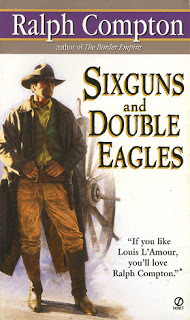 The rights to The Goodnight Trail sold quickly, establishing a profitable long-term relationship with publishers St. Martin’s Press and Signet. It sold more than 1 million copies and was chosen by the Western Writers of America as a finalist for their Medicine Pipe Bearer Award—given to the best debut Western of the year. Compton had read many of the great Western writers. While believing he had developed his own style, he claimed, “I shamelessly adopted one element, which I admired most in the work of Louis L’Amour. While there was romance in his books, there was no graphic, shocking sex.”
The rights to The Goodnight Trail sold quickly, establishing a profitable long-term relationship with publishers St. Martin’s Press and Signet. It sold more than 1 million copies and was chosen by the Western Writers of America as a finalist for their Medicine Pipe Bearer Award—given to the best debut Western of the year. Compton had read many of the great Western writers. While believing he had developed his own style, he claimed, “I shamelessly adopted one element, which I admired most in the work of Louis L’Amour. While there was romance in his books, there was no graphic, shocking sex.”
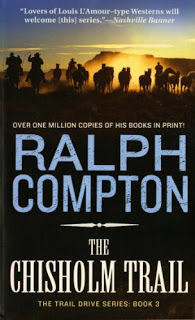 Of his writing, Compton also explained, “I depend solely on three elements: (1) a powerful sense of time and place, (2) a strong, fast-paced story, with interesting sub-plots, and (3) powerful, memorable characters.” His inspiration for the strong characters and style of storytelling he brought to his own work was the television series Gunsmoke.
Of his writing, Compton also explained, “I depend solely on three elements: (1) a powerful sense of time and place, (2) a strong, fast-paced story, with interesting sub-plots, and (3) powerful, memorable characters.” His inspiration for the strong characters and style of storytelling he brought to his own work was the television series Gunsmoke.In a 1993 issue of The Roundup, a publication of the Western Writers of America, Compton returned to the question that started it all...“Can you write a western? I could, and thank God, I did. My one regret is I lacked the confidence and courage to do it sooner.”
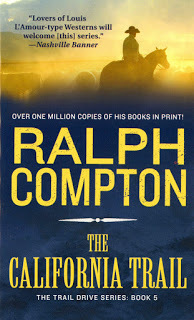 Ten more Westerns in the Trail Seriesfollowed. Books in the Sundown Riderseries and the Border Empire series, along with a dozen other Westerns added to his prolific, fast paced output. Like a man knowing he is running out of time, Compton authored more than two dozen novels during the last decade of his life. Six Guns and Double Eagles, The California Trail, and The Shawnee Trail were all bestsellers in 1997.
Ten more Westerns in the Trail Seriesfollowed. Books in the Sundown Riderseries and the Border Empire series, along with a dozen other Westerns added to his prolific, fast paced output. Like a man knowing he is running out of time, Compton authored more than two dozen novels during the last decade of his life. Six Guns and Double Eagles, The California Trail, and The Shawnee Trail were all bestsellers in 1997.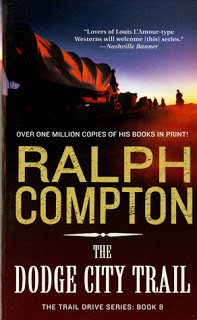 Compton passed away from cancer in Nashville, Tennessee at age sixty-four. His journey from dirt floor beginnings to bestselling author is one of hope and perseverance, as inspiring as any of his Westerns. In his own words, “While the Old West lives only in the pages of history, I believe there’s something within each of us that longs for those days when there was yet another frontier to be conquered, another mountain to cross, and the thrill of the unknown. I believe the Old West will live forever—perhaps not in Hollywood, but in the hearts and minds of men and women who refuse to let it die.”
Compton passed away from cancer in Nashville, Tennessee at age sixty-four. His journey from dirt floor beginnings to bestselling author is one of hope and perseverance, as inspiring as any of his Westerns. In his own words, “While the Old West lives only in the pages of history, I believe there’s something within each of us that longs for those days when there was yet another frontier to be conquered, another mountain to cross, and the thrill of the unknown. I believe the Old West will live forever—perhaps not in Hollywood, but in the hearts and minds of men and women who refuse to let it die.”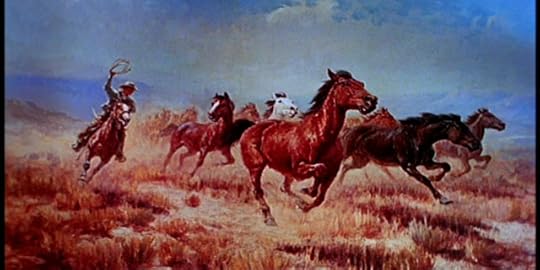
***In researching Compton I repeatedly found a reference to a 1973 novel, Festival of Spies, listed as part of his writing resume. Copies of Festival of Spies are so exceedingly scarce, I’ve yet to turn up a single copy to verify if it was indeed written by Compton, or is the work of another author of the same name—the resolution toward which I am leaning. Often times the Internet becomes so incestuous as one source cannibalizes another, perpetuating myths and mistakes. If anyone has a copy of Festival of Spies, or knows the story behind the title, please let me know.
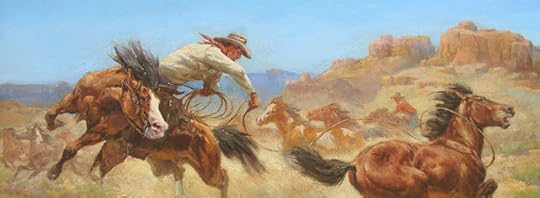
Published on May 20, 2018 14:55



